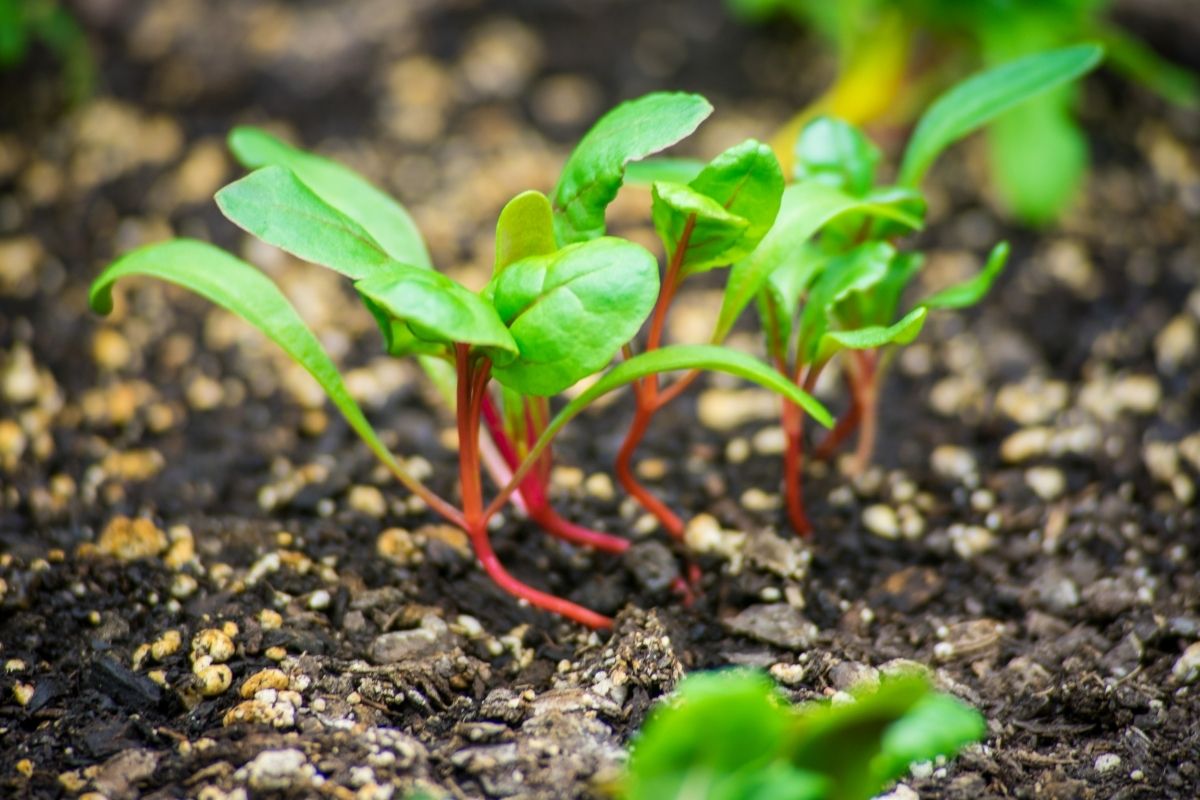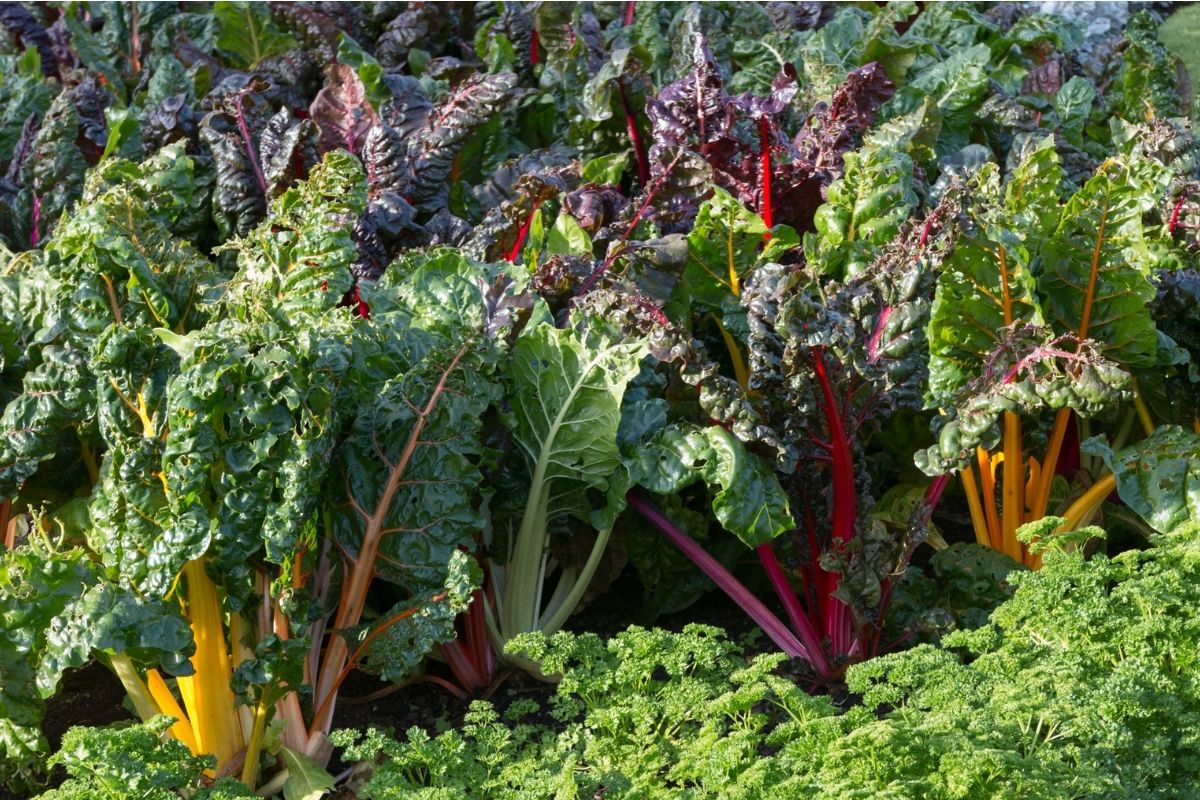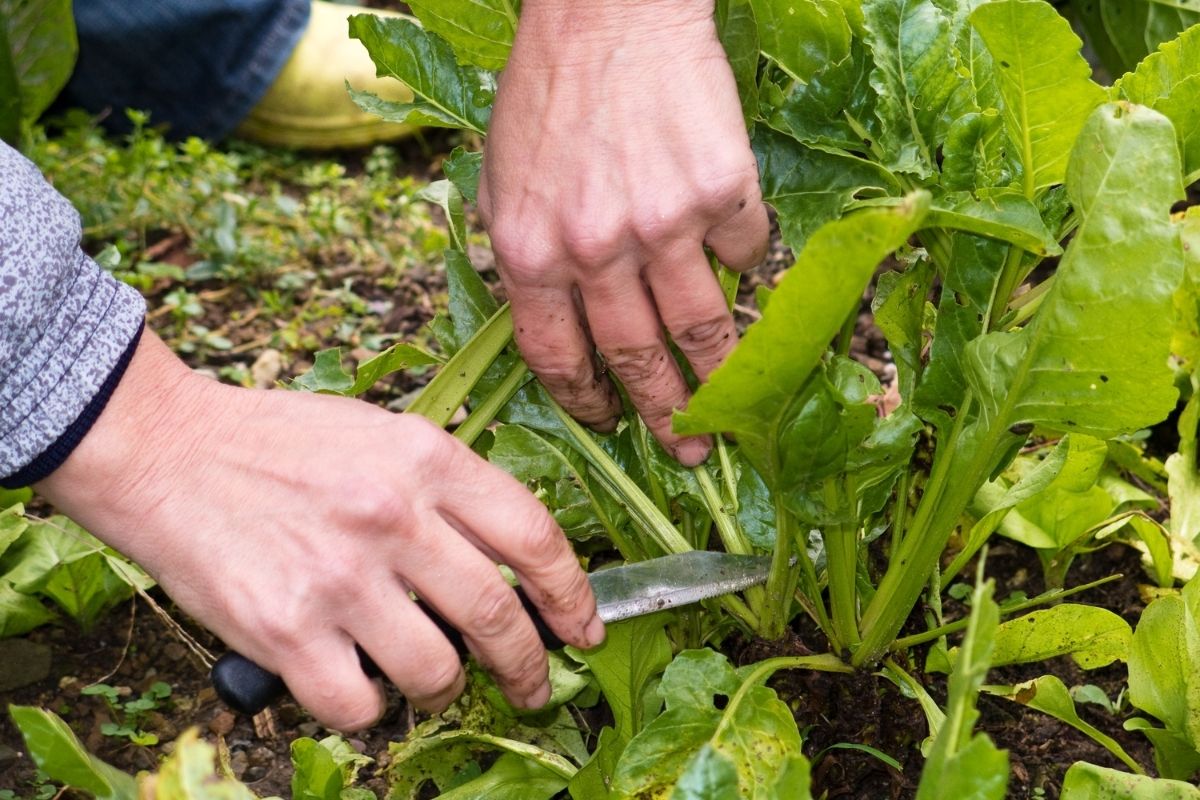Silverbeet is a no-nonsense plant that’s a staple in many vegetable gardens. Used in cuisines world-wide, silverbeet is a versatile vegetable that is easy to grow from seed. Having a patch of silverbeet in your garden means you always have something fresh and nutritious on hand that can be harvested as you need it.
What is Silverbeet?
Silverbeet (Beta vulgaris), sometimes called Swiss chard, is a biennial leafy green vegetable with large leaves and thick stems that’s usually grown as an annual. The thick stems, often referred to as ribs, are edible and extend into the middle of each leaf. Silverbeet is high in minerals, including vitamins K, B6, C, and E, and folate and iron. While standard varieties have white ribs, there are also varieties with red or yellow ribs that make an ornamental feature in the vegetable garden.
Silverbeet is commonly referred to as spinach, but its huge puckered leaves and strong stems make it more robust spinach. If you prefer the more tender leaves of spinach, harvest silverbeet leaves while they’re small, or better still grow it as a microgreen.
Varieties
- Barese: A dwarf variety with smooth, dark glossy green leaves and prominent thick white stems.
- Fordhook Giant: A popular cultivar with enormous dark green crumpled leaves and ivory stalks.
- Golden Sunrise: A very productive variety with golden yellow stalks, veins and midribs and shiny green crumpled leaves.
- Ruby Red: An ornamental variety with dark green leaves with red veins and bright red stalks.
- Large White Ribbed: A high yielding variety with large, flat, dark green leaves and white ribbed stems.
- Rainbow Chard and Bright Lights Mix: Both varieties include a mix of plants with brightly coloured stalks in a range of reds, pinks, oranges, yellows & white.
- Perpetual Gator: A type of Leaf Beet that resembles and is used like silverbeet or spinach, with good disease and heat tolerance.
Before You Plant
Silverbeet can be planted year round in most climates, though it’s advisable to avoid mid-winter if you live in an area that experiences frost and mid-summer in tropical climates. This means you can plant the seeds whenever you have space available in your garden.
Silverbeet thrives in nutrient-rich, well-draining loamy soil with a pH of 6 or higher. Like all vegetables, it requires soil enriched with compost, aged manure or other organic matter. Silverbeet also requires a position in full sun.
If you're short on garden space, you can meet these requirements by placing a single plant in a 30-centimeter container. Mixing some compost into the potting mix will give your plants a jumpstart, as silverbeet is a heavy feeder. What you put in your soil eventually turns up in your food, so use a good quality potting mix with a slow-release fertiliser included.
Sowing the Seeds
Silverbeet is best sown in the garden directly where you want them to grow. Before sowing, you can soak the seeds for two to four hours if desired. Sow the seeds 15mm deep and keep the soil moist but not wet. Germination should take 5 to 10 days at soil temperatures of 10 to 30°C. Germination may be slower if the weather is colder.
Cultivation
Silverbeet does not require any special care or attention once it’s established. Water deeply and regularly and harvest stems to promote new growth. To prolong the life of the plant, remove flower stalks as soon as they appear. If leaves begin to yellow, fertilise with a high-nitrogen fertiliser at the recommended rate.
Pests and Diseases
Silverbeet has few pest and disease issues. However, snails and slugs can prey on young plants or find a home in the centre of larger plants. Powdery mildew can be a problem in areas of high rainfall or where the leaves are watered overhead.
Cercospora leaf spot is a widespread fungus that infects beets. Light grey patches with brown rings appear on the leaves, and a small hole often appears in the center. Extreme temperatures, moisture, or prolonged wetting of leaves can aggravate this problem. Further problems are caused by water droplets, insects, plant debris, and organic substances in the soil, which can all disperse the spores of this fungus to healthy plants. Crop rotation and the quick removal of plant debris will help to address this problem.
Harvesting Silverbeet
Silverbeet is the perfect cut-and-come-again plant: simply remove the leaves you need, and the plant will continue to produce more. As the roots store enough carbohydrates for subsequent leaf growth, numerous leaves can be harvested at once without damaging the plant.
Harvest leaves from the outside of the plant, cutting them near to the surface of the soil. Maintain at least four or five new leaves on the plant to keep it growing. After harvesting the leaves, thoroughly wash them and store them in a container in the fridge until you’re ready to use them.
To harvest the entire plant, clip the silverbeet about 5cm just above the soil at the base of the stem. This allows the plant to regrow new leaves, though this may take some time.
Using Silverbeet in the Kitchen
Silverbeet is distinguished by its stems, stalks, and the veins on its leaves. It does contain oxalates, which are significantly decreased by heating and can bond with calcium, causing kidney stones in people who are prone to them.
While millennials have fallen in love with the health benefits of kale, herbalists have long been fans of the charming silverbeet. The juice of silverbeet leaves has been linked with cancer cures and toothaches since Roman times, and famed 17th-century botanist Nicholas Culpeper used it to treat vertigo and migraines.
In the kitchen, silverbeet can be steamed, lightly braised, stir fried or added to soups and stews. Cut the leaves from the ribs, which can be chopped finely and cooked. Leaves can also be shredded and eaten raw in salads.









